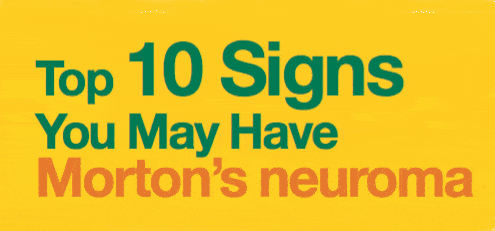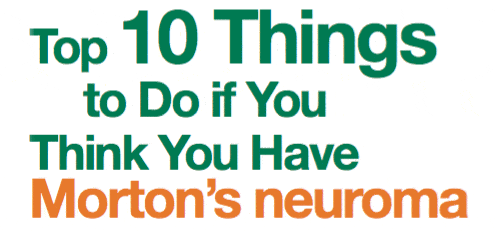My husband, Mark Pearl, MD, suffered from Morton’s neuroma for many years which eventually become unbearably painful before he was treated. Watch his personal testimonial below as he describes his treatment journey leading to getting back to his usual active self. See what inspired him to start The Center for Morton’s Neuroma.

Our Medical Director
Janet D. Pearl, MD, MSc
Transcript:
Hi. If you’re watching this, you’ve probably been diagnosed with Morton’s neuroma and are seeking a solution for the pain so you can get back to living your life again. Perhaps you’ve been told by your doctor you need to have surgery, or you’re seeking other options, or you’ve tried surgery, injections, physical therapy, medications, orthotics or other options which simply haven’t worked and have only brought you more frustration, then you need to watch this video to discover the most effective way to treat Morton’s neuroma so you can be pain-free and back to being yourself without surgery and without medication. Be sure to stick around because at the end, I’m going to share exactly how you can get the solutions that you’ve been so desperately seeking. As I mentioned earlier, I’m Dr. Mark Pearl. I’m a physician trained in internal medicine. After suffering with Morton’s neuroma for four years, I was finally able to overcome it without surgery.
For the last eight years, I have run the Center for Morton’s Neuroma with my wife, Dr. Janet Pearl, where we have helped thousands of others who are suffering from this horrible condition to live pain-free. We believe that we see and treat more Morton’s neuroma patients than any place in the world. That said, about eight years ago, I was in a similar situation to the one you are in right now. I was suffering with intermittent right foot pain that worsened with certain activities and wearing certain shoes. In particular, if I wore my ski boots and went skiing, then after a day or two I would have a lot of foot pain. As a matter of fact, it got so bad that I actually had to stop skiing in the middle of the day, in the middle of the ski run and take off my boot. I was in so much excruciating pain, it was unbearable. I know what you are going through. I couldn’t jog. I could barely run, and it was even getting so bad that it woke me up from my sleep.
I was diagnosed with Morton’s neuroma and started researching possible treatments. I quickly discovered that surgery is not a solution. Studies have shown that between 30 and 35% of Morton’s neuroma surgeries fail. When they fail, you often end up with more pain and more discomfort than you started off with and it’s more difficult to treat. So the one thing I knew was that I did not want to have surgery. I tried cortisone shots. They gave me temporary relief. I would often have a cortisone shot before I went on a skiing trip so that I could at least do some skiing without too much pain. Eventually, the cortisone shots started to become less and less effective, and I started to worry about dangerous complications such as fat pad atrophy. I became so frustrated with the thought that I wouldn’t be able to do much sports, and I would end up living with this debilitating pain, so I started this quest to try and find other solutions.
I read all the medical research I could find on the treatment of Morton’s neuroma. I spoke to doctors all around the country. It took me two years to figure out how to really treat my Morton’s neuroma without surgery. So eventually, I concluded a few things. One, as I said earlier, surgery is not an obstacle. Morton’s neuroma surgery is the only surgery that purposely cuts a living nerve, and that’s because cutting a live nerve frequently has nasty complications. Alcoholic sclerosing injections where very low-dose alcohol is injected directly into the Morton’s neuroma is also not a solution. It just ends up irritating the nerve that doesn’t really achieve anything aside from creating more scarring. Cortisone injections, as I said earlier, are only temporary and become less effective the more you have them, and they have the very real risk of fat pad atrophy, which as I said is nasty. Morton’s neuroma can be very difficult to diagnose because about 1/3, that’s 1/3 of the population has asymptomatic Morton’s neuroma.
In other words, about a third of the people just have Morton’s neuroma. They don’t know it. They don’t have any problems at all. So just because you have a Morton’s neuroma on your MRI or on your ultrasound doesn’t mean that the cause of your foot pain is Morton’s neuroma. It’s just like saying just like with your appendix, just because you have an appendix doesn’t mean that every stomach ache is appendicitis. So my biggest conclusion, and the bottom line is that the best treatment for Morton’s neuroma by far is ultrasound guided ablations, either ultrasound-guided cryoablation, ultrasound-guided radio frequency ablation or ultrasound-guided neurolytic ablation. I had all three. The other important conclusion I reached is that it’s really hard to figure out how to treat Morton’s neuroma. I’m a trained physician. It took me two years to figure out how to treat this thing.
I was thinking about, “What about all the other people who are not physicians, who are not medical, how are they going to figure out how to treat this horrible, debilitating condition so that they can just get on with their lives?” So I started this center with my wife, Dr. Janet Pearl, who is also a physician, so that we could help other people like me regain their lives. My wife spent a couple of years traveling around the country and learning and perfecting how to do these procedures. Now I can go skiing as much as I want. I can run as much as I want. I can do pretty much whatever I want without any pain or irritation. So if you’re ready to get over your Morton’s neuroma, here’s how we can help. In our over eight years as a dedicated Morton’s neuroma clinic, we’ve treated more Morton’s neuroma than any place in the world.
We are dedicated to the treatment of this one condition, and we offer everything from short-term solutions for those people who must have relief within a week or two to go on a safari, to run the New York Marathon, to whatever they need to do, all the way to permanent solutions like the ultrasound guided ablations that I had that we specialize in. We also offer two types of surgery for the very, very, very rare circumstance where it’s needed. Our waiting list can be anywhere from three weeks to four months, so it’s best if you can schedule to make sure that you can get in and get on with your life. To see if you qualify, simply click the button below, fill out the brief application, and then you’ll have an opportunity to book a 30-minute call with one of our nurse educators. We look forward to meeting you and helping you get back to living your life. Thank you.


By providing us with your information you are consenting to the collection and use of your information in accordance with our Terms of Service and Privacy Policy.